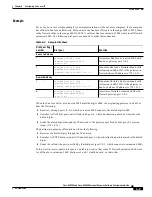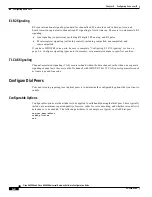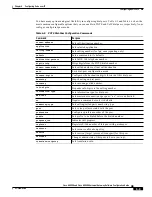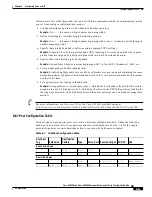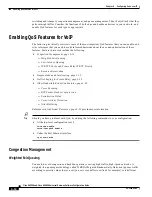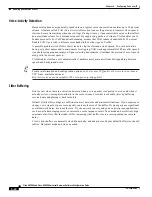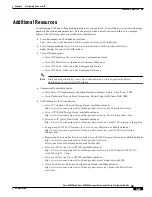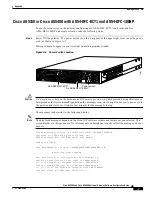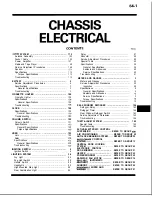
6-16
Cisco AS5350 and Cisco AS5400 Universal Gateway Software Configuration Guide
OL-3418-02 B0
Chapter 6
Configuring Voice over IP
Enabling QoS Features for VoIP
switching and transport, congestion management, and queue management. Thus, the QoS tasks that they
perform might differ. Consider the functions of both edge and backbone devices in your network, and
enable QoS features for each type as appropriate.
Enabling QoS Features for VoIP
The following text briefly overviews some of the most important QoS features that you can enable, and
cites references that you need to make informed decisions about the use and optimization of those
features. Features discussed include the following:
•
Congestion Management, page 6-16
–
Weighted Fair Queuing
–
Low-Latency Queuing
–
IP RTP Priority and Frame Relay IP RTP Priority
–
Resource Reservation
•
Fragmentation and Interleaving, page 6-19
•
Traffic Shaping for Frame Relay, page 6-19
•
Other Bandwidth-Reduction Features, page 6-20
–
Voice Encoding
–
RTP Packet-Header Compression
–
Serialization Delay
–
Voice-Activity Detection
–
Jitter Buffering
References in
Additional Resources, page 6-23
provide more information.
Tip
Should you have problems with QoS, try adding the following commands to your configuration:
•
At the top-level configuration level:
io-cache enable
voice-fastpath enable
•
Under the Fast Ethernet interface:
ip route-cache
Congestion Management
Weighted Fair Queuing
You need to avoid congestion on backbone gateways serving high-traffic, high-speed networks. A
weighted-fair-queuing methodology called WRED (Weighted Random Early Detection) queues traffic
according to priority values that you set (you set voice traffic to critical, for example), sets different




